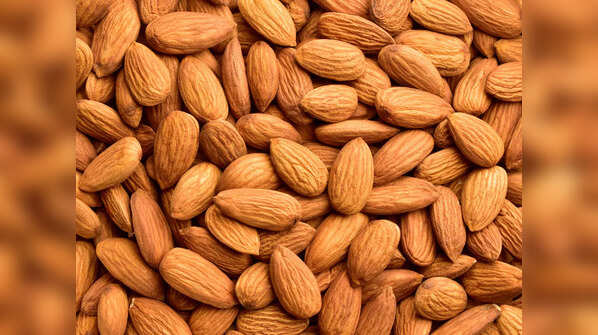Peel or without peel: Which is the best way to have almonds for maximum nutrition
Almonds, celebrated for their dense nutritional profile, offer a plethora of health benefits. These nuts are a rich source of monounsaturated fats, vital for heart health and cholesterol management. A 28-gram serving of almonds provides approximately 6 grams of protein, 3.5 grams of fiber, and a substantial amount of vitamin E, crucial for skin health and immune function.

Furthermore, almonds are packed with magnesium, which supports nerve and muscle function, along with smaller quantities of calcium, iron, and B vitamins. Research indicates that regular almond consumption can improve endothelial function, reduce LDL cholesterol levels in adults, and potentially lower the risk of cardiovascular diseases. Snacking on almonds before meals has also been linked to reduced post-meal blood glucose levels, weight management, and even the reversal of prediabetes in certain individuals. However, a common question arises: Is it better to consume almonds with or without their peel? Let's explore.
Almonds With the Peel
The brown skin of almonds is believed to contain potent antioxidants, such as polyphenols and flavonoids, known for their ability to combat oxidative stress and inflammation. Additionally, the peel contributes to the nut's overall fiber content, which is beneficial for gut health. The antioxidants present in the skin may also offer cardiovascular advantages.

However, the peel also contains tannins and phytates, which may hinder the absorption of certain nutrients, particularly iron, zinc, and calcium. In some cases, almond skin can be difficult to digest and may cause stomach discomfort.
Almonds Without the Peel
Soaking almonds and removing their skin softens their texture, making them easier to chew and digest. Soaking can also help reduce anti-nutrients like phytic acid, potentially improving the bioavailability of minerals. Peeled almonds are often considered gentler on the digestive system.

On the other hand, removing the skin also removes a significant portion of the antioxidants and polyphenols. The fiber content is also slightly reduced compared to whole almonds.
Which is the Best Option?
Individuals seeking maximum antioxidant and fiber intake may prefer consuming almonds with the peel. Those prioritizing easier digestion and improved mineral absorption might opt for soaked and peeled almonds.

Experts suggest that a balanced approach is often the most effective. Consider incorporating both types of almonds into your diet on alternating days to reap the benefits of each.
Newer articles
Older articles
-
 Government issues warning for these Android smartphone and tablet users
Government issues warning for these Android smartphone and tablet users
-
 This new AI tool can help you book train tickets, get refunds and check details on IRCTC website and app
This new AI tool can help you book train tickets, get refunds and check details on IRCTC website and app
-
 Microsoft plans to take on iPhone and Android smartphones with this new device
Microsoft plans to take on iPhone and Android smartphones with this new device
-
 Mahbub Anam replaces Faruque Ahmed as new BPL chairman
Mahbub Anam replaces Faruque Ahmed as new BPL chairman
-
 India vs England: Can Bazball outplay India's new era? Key battles and what to expect
India vs England: Can Bazball outplay India's new era? Key battles and what to expect
-
 Anderson–Tendulkar Trophy: India–England Test series enters new era, tribute to cricketing legends
Anderson–Tendulkar Trophy: India–England Test series enters new era, tribute to cricketing legends
-
 Tait rues new-ball miss as Nissanka punishes Bangladesh
Tait rues new-ball miss as Nissanka punishes Bangladesh
-
 iQoo Z9 Turbo new leak reveals key specifications: All the details
iQoo Z9 Turbo new leak reveals key specifications: All the details
-
 Teen Innovator Soars to New Heights: Mehar Singh Breaks Guinness World Record with Lightning-Fast Drone Ascent
Teen Innovator Soars to New Heights: Mehar Singh Breaks Guinness World Record with Lightning-Fast Drone Ascent
-
 Blue light damage: 7 reasons why not using the phone can improve health
Blue light damage: 7 reasons why not using the phone can improve health